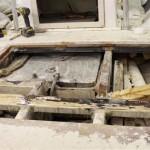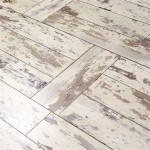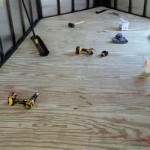Vermont Slate Flooring Care: A Comprehensive Guide
Vermont slate flooring is a desirable choice for homeowners and businesses due to its durability, natural beauty, and unique character. Proper care and maintenance are essential to preserve its aesthetic appeal and extend its lifespan. This article provides a detailed guide on how to care for Vermont slate flooring, covering regular cleaning, stain removal, sealing, and preventative measures.
Slate is a metamorphic rock formed from sedimentary materials subjected to intense pressure and heat. This geological process results in a dense, layered structure that is resistant to water absorption and wear. However, slate is not impervious to damage. Understanding the properties of slate and adopting appropriate cleaning and maintenance practices will help maintain its integrity and beauty for years to come.
Regular Cleaning of Vermont Slate Floors
Consistent cleaning is the foundation of any successful slate floor care regimen. Regular removal of dirt, dust, and debris prevents these materials from scratching the surface of the slate and dulling its natural luster. The frequency of cleaning depends on foot traffic and environmental factors.
For areas with moderate to high foot traffic, daily sweeping or vacuuming is recommended. Use a soft-bristled broom or a vacuum cleaner with a floor brush attachment to avoid scratching the slate surface. Microfiber dust mops are also effective at picking up fine particles and dust.
Weekly or bi-weekly damp mopping is necessary to remove embedded dirt and grime. Use a pH-neutral cleaner specifically designed for stone floors. Avoid using cleaners that contain acids, alkalis, or abrasive substances, as these can damage the slate. Mix the cleaner with water according to the manufacturer's instructions. Use a clean mop made of microfiber or sponge. Wring out the mop thoroughly to avoid over-wetting the floor. Excess water can penetrate the slate and lead to efflorescence, a white, powdery deposit that forms on the surface.
After mopping, rinse the floor with clean water to remove any residual cleaner. Dry the floor with a clean towel or allow it to air dry. Proper drying prevents streaking and water spots.
Consider using a walk-off mat at entrances to reduce the amount of dirt and debris tracked onto the slate floor. This simple preventative measure can significantly minimize the need for frequent cleaning.
Stain Removal Techniques for Vermont Slate
Despite its durability, slate is susceptible to staining from various substances, including oil, grease, food, and beverages. Prompt stain removal is crucial to prevent permanent discoloration.
The type of stain determines the appropriate removal method. For oil-based stains, such as grease or cooking oil, apply a poultice made of baking soda and water. Mix the baking soda with water to form a thick paste. Apply the paste to the stain and cover it with plastic wrap. Allow the poultice to sit for 24-48 hours to absorb the oil. Remove the plastic wrap and poultice and rinse the area with clean water. Repeat the process if necessary.
For water-based stains, such as coffee, tea, or juice, blot the stain immediately with a clean cloth. Avoid rubbing the stain, as this can spread it further. If the stain persists, try using a mild solution of dish soap and water. Apply the solution to the stain and gently scrub with a soft-bristled brush. Rinse the area with clean water and dry with a clean towel.
For rust stains, use a commercial rust remover specifically designed for stone. Always test the rust remover in an inconspicuous area first to ensure it does not damage the slate. Follow the manufacturer's instructions carefully. Rinse the area thoroughly with clean water after using the rust remover.
For stubborn stains that do not respond to conventional cleaning methods, consider consulting a professional stone restoration contractor. They have the expertise and specialized equipment to remove challenging stains without damaging the slate.
Prevention is key to minimizing staining. Clean up spills immediately to avoid allowing them to penetrate the slate. Use coasters under drinks and placemats under food to protect the floor from potential spills.
Sealing and Protecting Vermont Slate Flooring
Sealing slate flooring is an important step in protecting it from stains, water damage, and wear. A sealant creates a barrier that prevents liquids and dirt from penetrating the slate, making it easier to clean and maintain. The frequency of sealing depends on the type of sealant used and the amount of foot traffic the floor receives.
There are two main types of sealants for slate: penetrating sealants and topical sealants. Penetrating sealants are absorbed into the slate, providing protection from within. They do not alter the appearance of the slate and allow it to breathe. Topical sealants, on the other hand, form a protective layer on the surface of the slate. They can enhance the color and shine of the slate but may also make it more slippery.
Before applying a sealant, ensure the floor is clean and dry. Remove any existing sealants or coatings using a stripper specifically designed for stone floors. Follow the manufacturer's instructions carefully.
Apply the sealant according to the manufacturer's instructions. Use a clean applicator, such as a paint pad or lambswool applicator. Apply thin, even coats of sealant, allowing each coat to dry completely before applying the next. Avoid over-applying the sealant, as this can result in a sticky or cloudy finish.
The number of coats of sealant required depends on the type of sealant and the porosity of the slate. Generally, two to three coats are recommended. Allow the sealant to cure completely before allowing foot traffic on the floor. The curing time can range from 24 to 72 hours, depending on the product.
Regularly inspect the sealant for signs of wear and tear, such as scratches, dullness, or water penetration. Reapply the sealant as needed to maintain its protective properties. The frequency of resealing depends on the type of sealant used and the amount of foot traffic the floor receives. Generally, penetrating sealants should be reapplied every 3-5 years, while topical sealants may need to be reapplied more frequently.
In addition to sealing, consider using floor mats and area rugs to protect high-traffic areas of the slate floor. These coverings can help to cushion the floor and prevent scratches and wear.
Avoid dragging heavy objects across the slate floor, as this can cause scratches and damage. Use furniture pads under the legs of furniture to protect the floor from scratches.
Be mindful of the types of footwear worn on the slate floor. Avoid wearing shoes with sharp heels or cleats, as these can damage the surface. Encourage guests to remove their shoes at the door to minimize the risk of scratches and dirt.
Implementing these preventative measures can significantly extend the lifespan of your Vermont slate flooring and maintain its beauty for years to come.
Proper ventilation is important when using any cleaning or sealing product. Open windows and doors to ensure adequate airflow. Wear appropriate protective gear, such as gloves and a mask, to avoid inhaling fumes.
Always test any cleaning or sealing product in an inconspicuous area before applying it to the entire floor. This will help to ensure that the product does not damage or discolor the slate.
Consult with a professional stone restoration contractor for advice on specific cleaning and maintenance products and techniques. They can provide valuable insights based on their experience and knowledge of slate flooring.
By following these guidelines, Vermont slate flooring can remain a beautiful and durable feature in any home or business. Consistent care and preventative measures are essential for preserving its natural beauty and extending its lifespan.
Restoring A Slate Floor Foyer Ceramic Tile Advice Forums John Bridge

A Shabby Slate Floor Recovered Its Natural Beauty After Remarkable Grout Cleaning In Allegheny

Vermont Floor Tile Slate Tiles Camara Vt
Cleaning Restoring 18 Year Old Unsealed Slate Floor Ceramic Tile Advice Forums John Bridge

Solving Slate Flooring Problems 2004 06 08 Stone World

Vermont Slate Grey Green Cleft Monson Pattern W Red Shade Natural Stone Tile Genrose

A Slate Floor Has The Best Look Thanks To Our Hard Surface Restoration

Marblelife Expert Slate Floor Cleaning Restoration Services

Vermont Floor Tile Slate Tiles Camara Vt
Cleaning Restoring 18 Year Old Unsealed Slate Floor Ceramic Tile Advice Forums John Bridge
Related Posts








